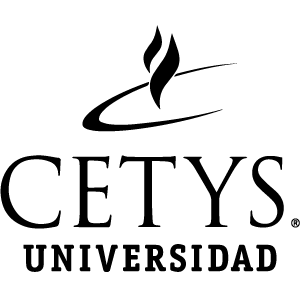https://repositorio.cetys.mx/handle/60000/1399| Campo DC | Valor | Lengua/Idioma |
|---|---|---|
| dc.contributor.author | Sepúlveda, Rubén | - |
| dc.contributor.author | Alanis, Arnulfo | - |
| dc.contributor.author | Alvelais-Alarcón, Marina | - |
| dc.contributor.author | Velázquez, Daniel | - |
| dc.contributor.author | Baltazar, Rosario | - |
| dc.date.accessioned | 2022-04-06T18:33:38Z | - |
| dc.date.available | 2022-04-06T18:33:38Z | - |
| dc.date.issued | 2021-06 | - |
| dc.identifier.uri | https://repositorio.cetys.mx/handle/60000/1399 | - |
| dc.description.abstract | This article presents the analysis and design of the intelligent agent model “IA-ACR”, which has the objective of monitoring movements, which are carried out in a coordinated and intelligent way in a robot, which will have the task of performing routines of physical exercises and dance, these routines will then be imitated by children with neurodevelopmental disorders (NDD), in order to capture their attention so that therapies are more effective, which will be evaluated by the specialist (psychologist). Due to the current situation of the pandemic that is being experienced due to COVID-19, health protocols were established, such as avoiding contact between people, given this restriction, a digital platform was developed that serves as support for children in order to receive their sessions, where the robot appears through videos, this being an advantage of telehealth. RESUMEN En este artículo se presenta el análisis y diseño del modelo de agente inteligente “IA-ACR”, el cual tiene como objetivo monitorear movimientos, los cuales se realizan de manera coordinada e inteligente en un robot, el cual tendrá la tarea de realizar rutinas de ejercicios y baile, estas rutinas luego serán imitadas por los niños con trastornos del neurodesarrollo (TND), con el fin de captar su atención para que las terapias sean más efectivas, lo cual será evaluado por el especialista (psicólogo). Debido a la situación actual de pandemia que se está viviendo por el COVID-19 se establecieron protocolos sanitarios como evitar el contacto entre personas, ante esta restricción se desarrolló una plataforma digital que sirve de apoyo a los niños para poder recibir sus sesiones, donde el robot aparece a través de videos, siendo esto una ventaja de la telesalud. | es_ES |
| dc.description.sponsorship | Springer,Link | es_ES |
| dc.language.iso | en_US | es_ES |
| dc.relation.ispartofseries | 241; | - |
| dc.rights | Atribución-NoComercial-CompartirIgual 2.5 México | * |
| dc.rights.uri | http://creativecommons.org/licenses/by-nc-sa/2.5/mx/ | * |
| dc.subject | Neurodevelopmental disorders (NDD) | es_ES |
| dc.subject | Primary emotions | es_ES |
| dc.subject | Intelligent agents | es_ES |
| dc.subject | Telehealth | es_ES |
| dc.subject | Robots | es_ES |
| dc.title | Intelligent Agent for Actuator Control in a Robot (IA-ACR) | es_ES |
| dc.title.alternative | Agents and Multi-Agent Systems: Technologies and Applications 2021 | es_ES |
| dc.type | Presentation | es_ES |
| dc.description.url | https://link.springer.com/chapter/10.1007/978-981-16-2994-5_33 | es_ES |
| dc.format.page | 395-404 | es_ES |
| dc.identifier.doi | https://doi.org/10.1007/978-981-16-2994-5_33 | - |
| dc.identifier.indexacion | Otros | es_ES |
| dc.subject.sede | Campus Tijuana | es_ES |
| Aparece en las colecciones: | Artículos de Revistas | |
Este ítem está protegido por copyright original |
Este ítem está sujeto a una licencia Creative Commons Licencia Creative Commons


